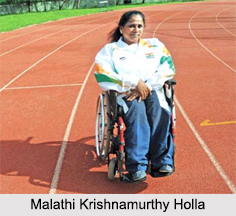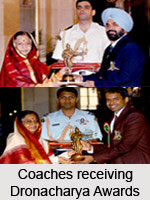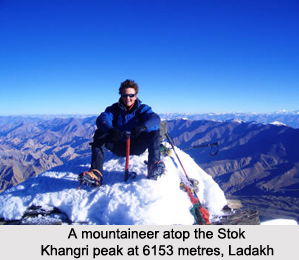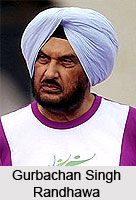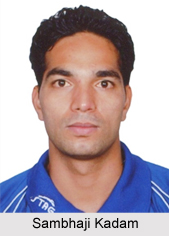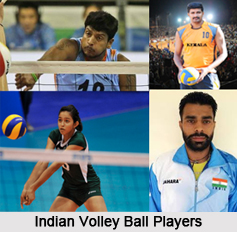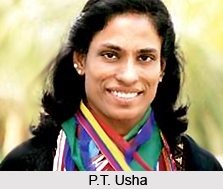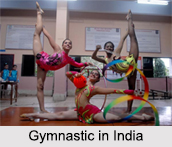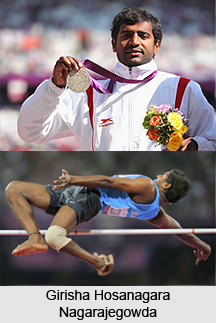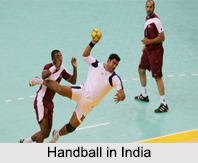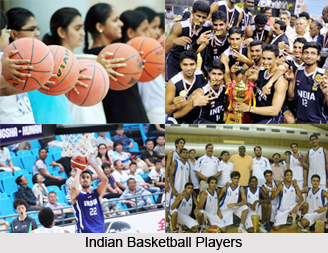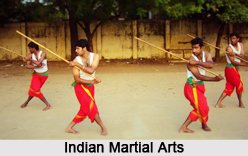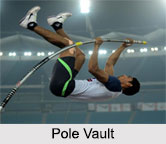Combined events are broadly divided into two main parts namely; Decathlon (Men) and Heptathlon (Women). Decathlon in Greek means "ten prizes". Decathlon consists of 10 events which are held on two consecutive days in the following order from 1912 onwards:
(a) First day- 100 m, Long jump, Shot put, High Jump, 400 m.
(b) Second day- 110 m hurdles, Discus throw, Pole Vault, Javelin throw, 1500 m
Heptathlon, instituted in 1984 in place of Pentathlon, consists of seven events, which are held on two consecutive days:
(1) First day- I00 m hurdles, Shot put, High Jump, 200 m
(2) Second day- Long jump, Javelin throws, 800 m
Each competitor must compete in all events. General rules apply to each event except that only three attempts are allowed in the long jump and throws. Disqualification occurs on a third false start instead of two in the normal course. The wind assistance does not disqualify a record unless it is over 4 m/sec instead of 2 m/sec
Decathlon
Competing in the decathlon competition is the ultimate challenge for the senior male and female athlete. The competition is against oneself and the scoring tables and the aim is to score more points than anyone else does. It is the supreme test of mind and body; challenging the person`s character, attitude and determination and their physical abilities. It is impossible to `tame` the event because nobody has ever achieved the perfect score (although some have got close) - there is always room for improvement and progress.
When training for decathlon, athletes will work on techniques and conditioning, during which each event sets its own major physical demands.
Speed and strength (power) are of vital importance, and so it seems reasonable to conclude that successful combined event athletes must be fast and strong. The predominant requirements of the decathlete are mobility, skill, speed and explosive strength.
The long term planning of combined events includes the planning of technique and strength conditioning. This concept is true for athletes of all ages - whereby technique is dove-tailed with conditioning, but to varying degrees depending on ages.
For younger athletes (13 to 15) during the years of early training, athletes should work on the simple disciplines, ones that are more `natural` to learn, such as sprinting, hurdling, long jump and high jump.
Later training (15 to 18 years) should include more complex events such as shot, javelin and pole vault events that are more demanding.
Heptathlon
Heptathlon, for senior and junior women, comprises of seven events and is a competition against oneself and the scoring tables with the aim to score more points than the other competitors. It is a test of mind and body; challenging the person`s character, attitude and determination and their physical abilities.
When training for combined events, athletes will work on techniques and conditioning, during which each event sets its own major physical demands.
Speed and strength (power) are of vital importance, and so it seems reasonable to conclude that successful combined event participants must be fast and strong. The predominant requirements of the heptathlon athlete are mobility, skill, speed and explosive strength.
The long term planning of combined events includes the planning of technique and strength conditioning. This concept is true for athletes of all ages - whereby technique is dovetailed with conditioning, but to varying degrees depending on ages.
For younger athletes (13 to 15) during the years of early training, athletes should work on the simple disciplines, ones that are more `natural` to learn, such as sprinting, hurdling, long jump and high jump.
Later training (15 to 18 years) should include more complex events such as shot and javelin events that are more demanding.
Scoring in Combined Events
Points are scored when a competitor completes his runs, jumps and throws. He is awarded points on the basis of timings, heights and distances.
The competitor who wins the maximum points is declared the winner. In case there is a tie, the competitor with the most points in any one event is the winner.





